Brown spots on apple leaves: causes and treatment
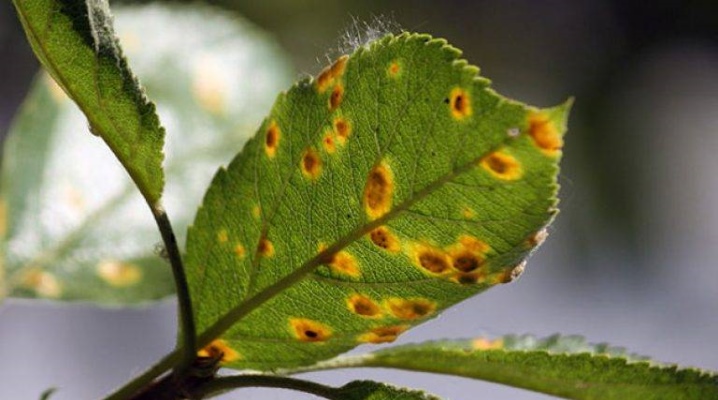
Often, gardeners are faced with such a problem as the appearance of brown spots on the foliage of the apple tree. The reasons for which they appeared can be very diverse. Read about why this is happening and how to deal with it below.
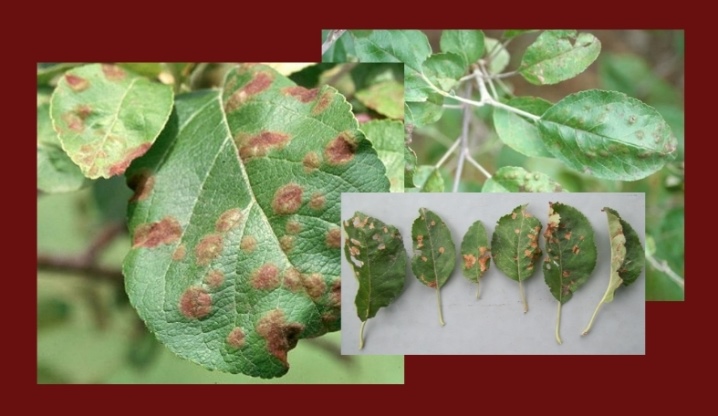
Reasons for the appearance
In order to carry out high-quality treatment of a tree and get rid of brown spots on the leaves of an apple tree, first of all, it is necessary to correctly establish the cause of their occurrence. Below is a description of the most common grounds.
Diseases
The most common cause of stains on tree foliage is fungal disease. Most often, the fungus spreads in summer with high humidity. Fungal spores enter the planting tissues and at first look like round or oval specks of a brownish or reddish hue. However, then the plant tissue becomes covered with zigzag growths that actively spread throughout the plant.
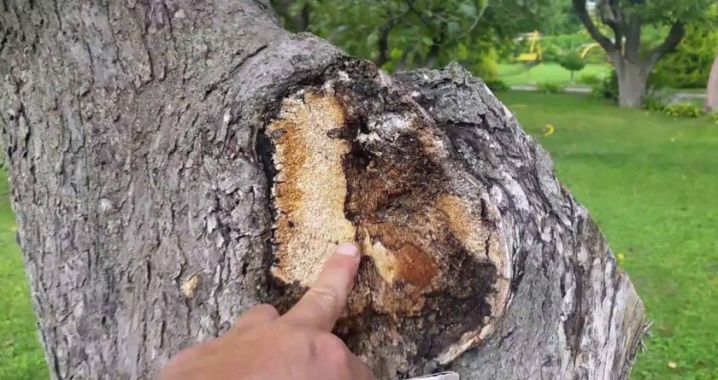
Another common disease is scab. It is one of the most dangerous and is also a fungal infection. This disease is actively spreading throughout the apple tree, affecting every part of it.
This disease develops especially quickly in conditions of low temperatures and high levels of humidity.
If the plant is not cured at first, then there is a chance to lose both the fruits and the apple tree itself. The necessary therapeutic measures against the disease must be taken even at the stage when the plant's fruit buds are just beginning to bloom.
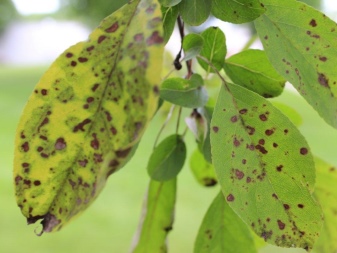
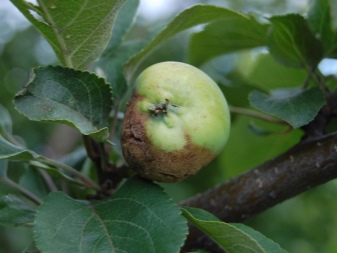
Pests
Constant attacks from harmful insects are another common cause of brown, rust-like spots on young foliage. Not only do these parasites harm the fruit tree by feeding on its juices, but they are also the main carriers of many diseases. You need to actively fight pests in order to save your tree and ensure the safety of the crop. To do this, it is recommended to resort to the help of folk solutions based on onions, garlic, tobacco, wood ash and not only, and in advanced cases, use chemical or biological agents.
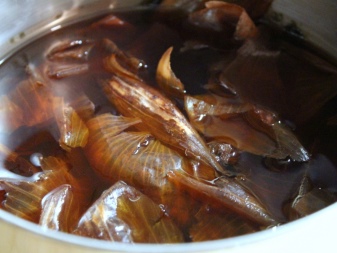

If we talk about a specific pest, then the appearance of brown spots on the foliage is caused by such a harmful insect as copperhead. Its larvae absorb the juices of young apple foliage, which is why the flowers die off later. In addition, the insect provokes the fall of the ovaries, the smallness of the leaves and, in general, lowers the immunity of the tree, making it less resistant to diseases.
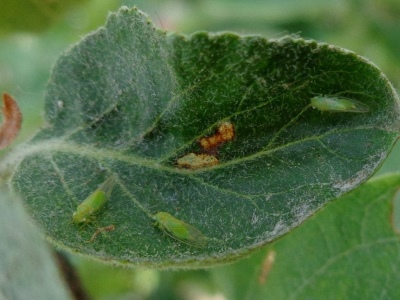
It is possible to identify the appearance of the parasite by the products of its vital activity. Copperhead larvae are able to secrete sticky dew, which looks like small light balls, which subsequently glue the inner areas of blossoming flowers, young foliage and more. Further, black is formed on such secretions, and shoots, foliage and fruits begin to become covered with dark brown spots.
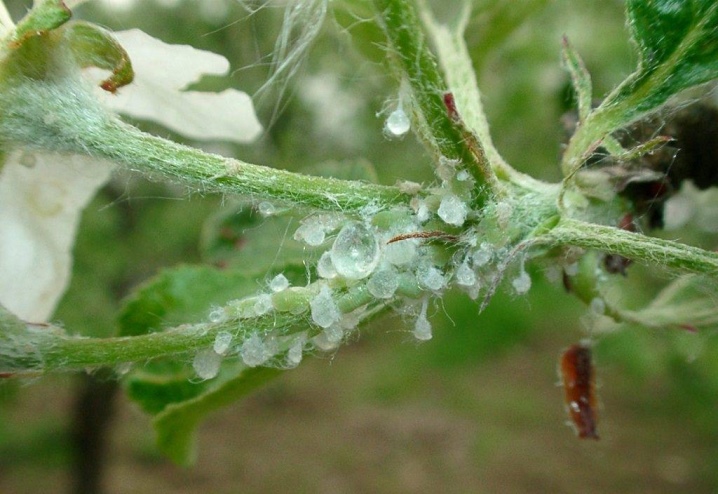
To eliminate these parasitic insects, the plant must be sprayed with hot water (60+ degrees). They do this in March before the sap flow begins. Before flowering, when the buds begin to bloom, in the fight against the parasite, you can use "Inta-Vir", for which you need 10 liters of water and 1 tablet of the agent.
In addition, during the growing season, you can use tinctures made according to folk recipes, for example: from garlic, celandine, tansy, potato tops and more.
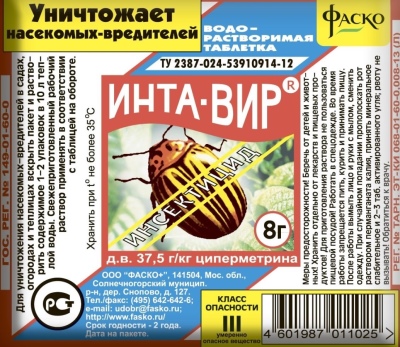
Lack of minerals
However, the appearance of rusty spots on apple leaves is associated not only with various diseases and parasitic insects. This may also be due to the owner of the garden himself, who provides the plant with improper care. So, he may simply lack certain minerals for normal development and fruiting.
Most often, foliar problems are associated with nitrogen deficiency. The lack of this substance is reflected mainly in the foliage. They turn yellow, look dry, inhibit growth. The shoots of the plant become brown in color and quickly fall off, never forming normally.
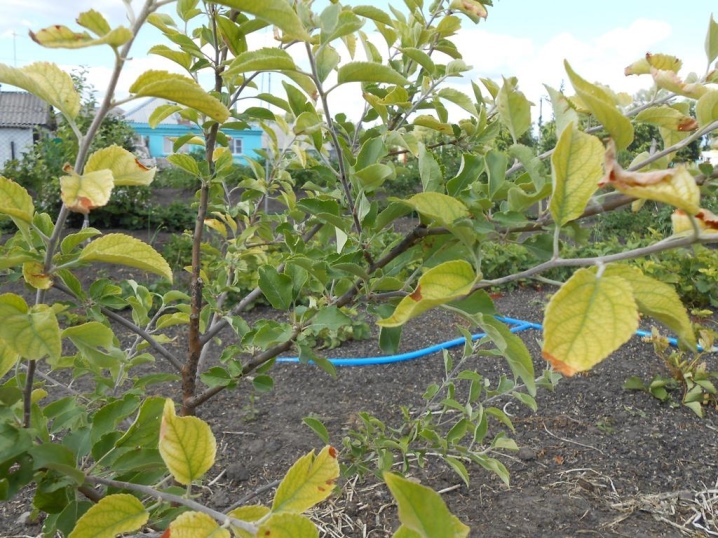
Another reason is a lack of potassium. At the same time, the foliage becomes brownish or brownish, gradually dries up and inhibits its development.
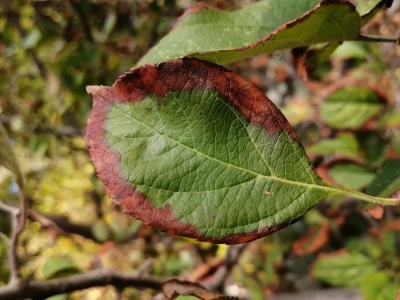
The lack of magnesium also affects the leaves of apple trees. They begin to actively turn yellow, while being covered with brown buds. This is reflected in the apples themselves. They become small, change their taste. Most of the foliage falls off.
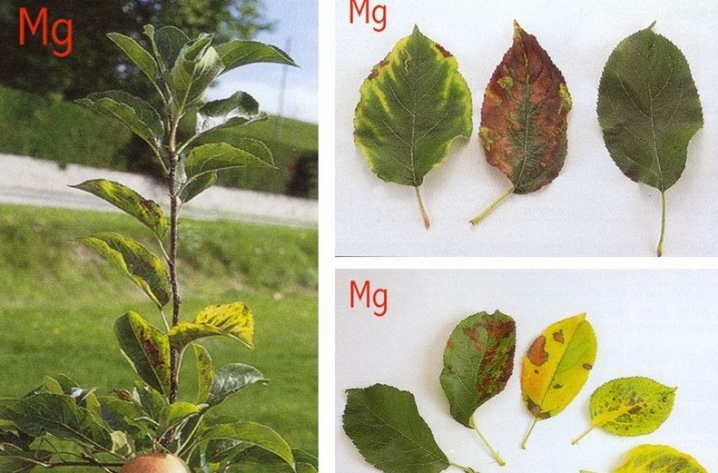
Lack of boron is another reason for problems with the apple tree. This disease is most reflected in the tree. It can be noticed by the condition and taste of the peel of apples: they begin to taste bitter and dry, and never fall off. In addition, brown spots also appear.

Copper deficiency is also reflected in the green apple tree. In this case, brown spots appear along the edges of the foliage. At the same time, cracks and swellings can be seen on the bark of the tree, and the tops of the shoots begin to gradually dry out.
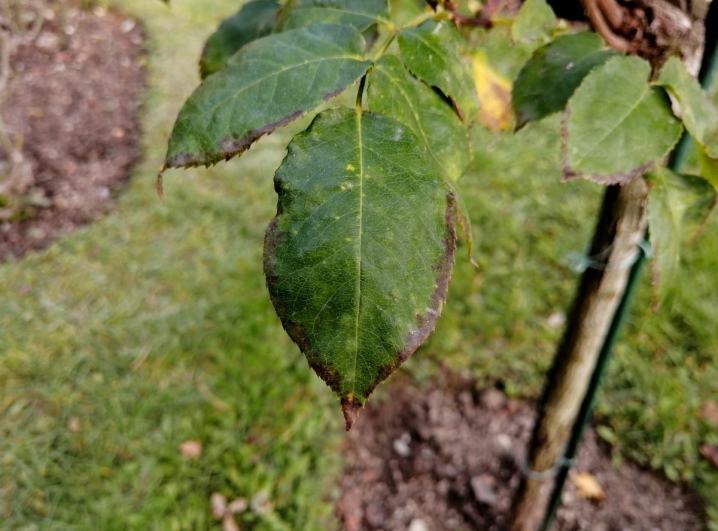
Iron is another essential ingredient for the fruit tree. With a deficiency of this component, its foliage begins to turn brownish-red, the shoots begin to die off, and their tops dry.
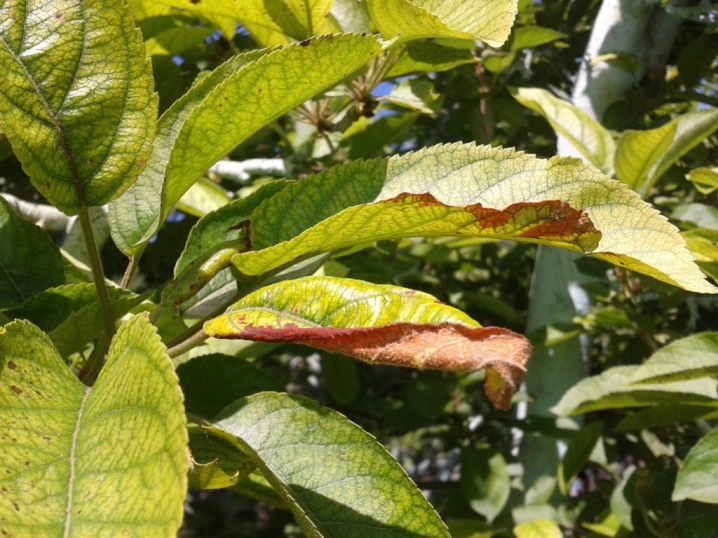
Having noticed one of these signs on your plant, it is necessary to supply it with the substances it needs as soon as possible.
However, try to apply them in moderation, as excess minerals are also harmful to the tree.
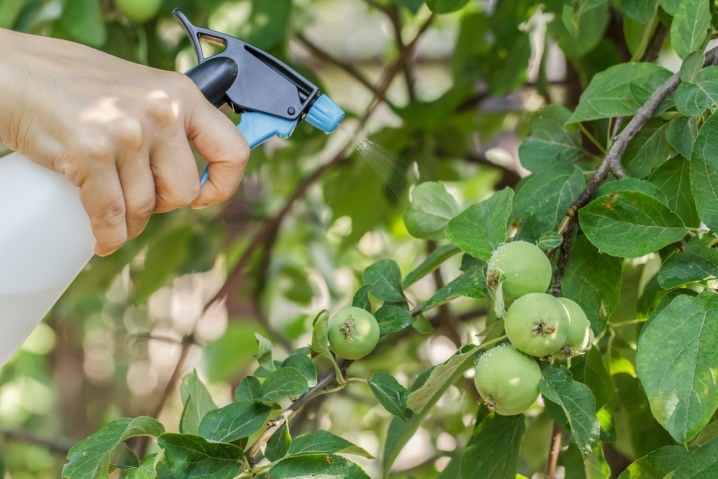
How to treat
If you could not avoid the appearance of spots and the leaves are still covered with them, then you need to take action. This must be done as quickly as possible, since it can be difficult, and sometimes even impossible, to fight the disease at advanced stages.
Having managed to notice the disease at first, the affected tree must be treated with a fungicide. Three weeks later, the plant needs to be sprayed again to consolidate the effect.

If you find the disease too late, then the number of treatments will have to be increased. So, in case of severe damage, the tree will need to be sprayed 6 times during its growing season.
Note that when processing the product, it is necessary to change it regularly, otherwise the fungus may develop addiction, due to which the effectiveness of the drugs will noticeably decrease or be completely canceled.
At the same time, spraying of plants is carried out in calm cloudy weather or in the evening, when there is no strong wind. Treatment in summer during a period of high air temperature is pointless and ineffective, in addition, there is a chance that the plant will receive a burn, which manifests itself in the form of yellowish-brown specks.
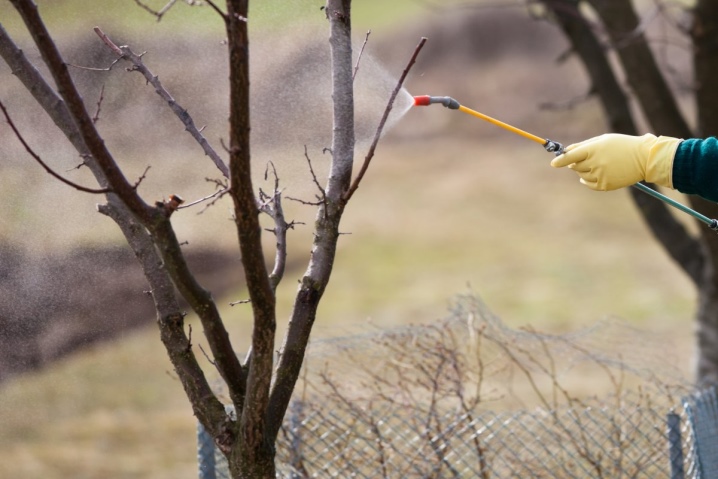
If we talk about preparations for spraying, then most often summer residents use the following: iron vitriol, urea, DNOC, "Nitrofen", colloidal sulfur with a concentration of 70%, copper oxychloride, "Topaz", "Skor" and Bordeaux mixture with a concentration of 1%.
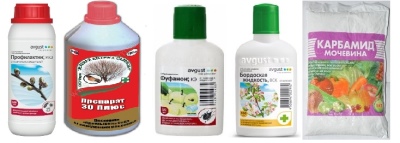
If you are faced with such a fungal disease as scab, then it is necessary to process not only the apple tree, but also the soil around it. Most often, copper sulfate is used for this. The plant must be processed several times at regular intervals. The first time this is done before the buds begin to bloom.The second treatment takes place after flowering, and the third one - three weeks after the second spraying.
In this case, before processing, it is necessary to eliminate the affected areas of the plant, and dig up the soil around it, trying not to harm the root system.
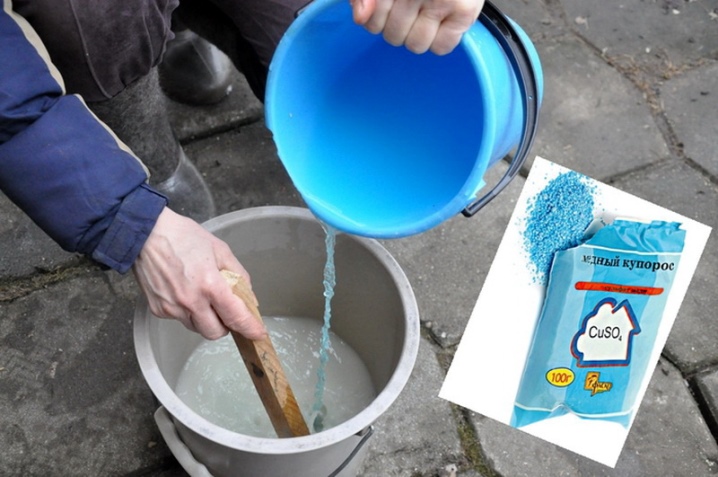
Prevention methods
Fighting plant diseases is difficult, and therefore it would be best to simply avoid them. To do this, it is necessary to observe preventive measures that will help to avoid the disease or (in case of an unfavorable development of events) to eliminate them at first, not allowing them to fully develop.
So, first of all, it is necessary to regularly inspect the plant for infestation and pests. This will help, if something happens, to take timely measures and get rid of the disease without any difficulties. It is also necessary to remove the remnants of last year's foliage after the final harvest, as pest larvae or fungal spores may remain on them. It is also recommended to dig the soil.
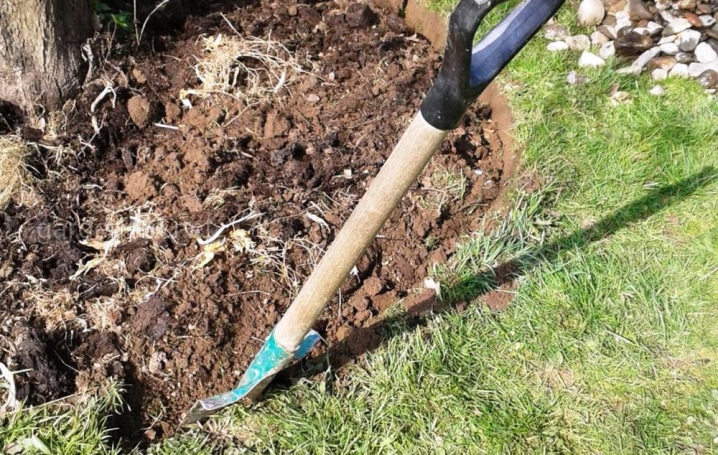
It is also worth paying attention to proper care, supplying the plants with the necessary mineral and organic dressings on time. It is also impossible to allow waterlogging and neglect of plantings, which impede normal air circulation. Otherwise, there is a high risk of developing a fungus.
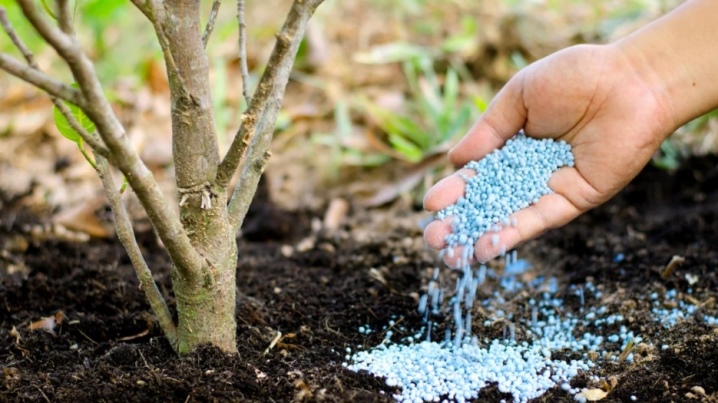
In addition, it is recommended to choose for planting such apple varieties that are highly resistant to diseases. Such varieties include Suvorovets, Winter Jonathan, Antonovka and some others. This will not be able to provide one hundred percent protection against diseases, but it will significantly reduce the likelihood of their occurrence.
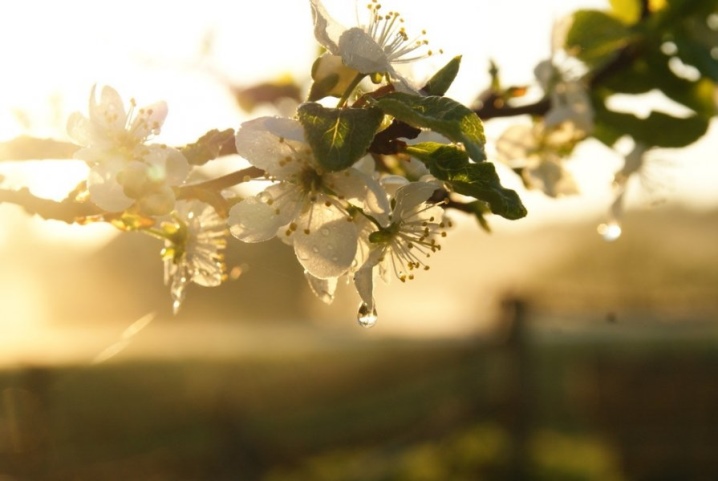
You will learn more about how to deal with scab on an apple tree in the next video.













The comment was sent successfully.